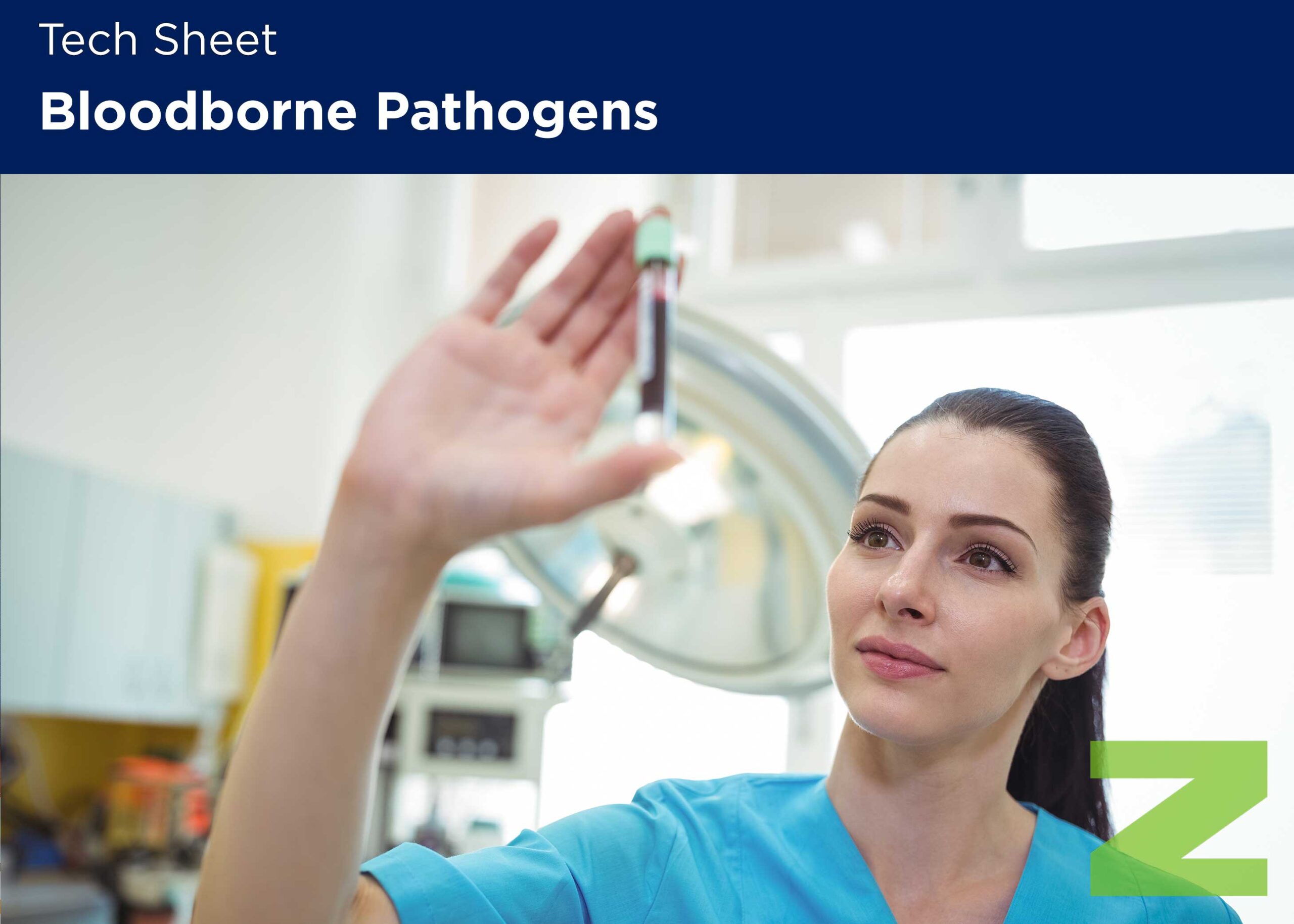Tech Sheet
Bloodborne Pathogens Program
Bloodborne pathogens are microorganisms present in human blood which can cause disease in humans. These pathogens include, but are not limited to, hepatitis B virus (HBV) and human immunodeficiency virus (HIV). A bloodborne pathogens program is necessary in all organizations where employees are exposed to blood or other potentially infectious materials.
Does My Company Need An Exposure Control Plan?
The OSHA Bloodborne Pathogens standard applies to all occupational exposures to blood or other potentially infectious materials (OPIM). These include human body fluids such as saliva; semen; vaginal secretions; cerebrospinal, synovial, pleural, pericardial, peritoneal and amniotic fluids; any body fluids visibly contaminated with blood; unfixed human tissues or organs; and in situations where it is difficult to determine the nature of the body fluids. Any employee who has “reasonably anticipated” exposure to blood or OPIM is covered by the standard.
Examples of employees with a “reasonably anticipated” exposure and, who are therefore covered by the standard, include:
• In-house medical personnel (e.g., doctors, nurses)
• Employees who are trained and designated as responsible for rendering first aid or medical assistance as part of their job duties (e.g., supervisors, safety directors, or first responders are all covered by the standard, even if administering first aid is a collateral duty to their routine work assignments)
The standard does not apply to “Good Samaritans,” who are employees not designated by the employer to administer first aid, but who freely choose to assist an injured employee. Depending solely on “Good Samaritans” is generally unwise, as OSHA requires first aid to be available consistent with the types of injuries that occur.
Exposure Control Plan
An OSHA-regulated employer with one or more potentially exposed employees should develop a written exposure control plan designed to eliminate or minimize exposure to bloodborne pathogens. Many agencies, including OSHA, offer model exposure control plans to assist employers in developing this program. In general, the plan should include the following components:
• Determination of employee exposure
• Implementation of various methods of exposure control
– Universal precautions
– Engineering and work practice controls
– Personal protective equipment
– Housekeeping
• Hepatitis B vaccination
• Post-exposure evaluation and follow-up
• Communication of hazards to employees and training
• Procedures for evaluating circumstances surrounding exposure incidents
The exposure control plan should be reviewed at least annually and updated whenever changes in tasks, procedures or employee positions affect or create new occupational exposure. The exposure control plan should be accessible to all employees in the workplace on all work shifts.
This plan should include provisions for ensuring all employees with occupational exposure have received or declined the Hepatitis B vaccination. Those declining the vaccination should sign the OSHA-mandated Hepatitis B Vaccine Declination Form. The link to this form is included at the bottom of the page.
Universal Precautions
All employees, not only those who are designated to administer first aid, should be trained in Universal Precautions, OSHA’s required method of control to protect employees from exposure to all human blood and OPIM. The term refers to a concept of bloodborne disease control which requires that all human blood and certain human body fluids are treated as if known to be infectious for HIV, HBV and other bloodborne pathogens.
Body Substance Isolation (BSI) may also be used as an alternative to Universal Precautions, provided facilities using the method adhere to all other provisions of the standard. BSI is a control method that defines all body fluids and substances as infectious. BSI incorporates not only the fluids and materials covered by the standard, but expands coverage to include all body substances.
Regardless of which method is used, employees should be trained on the engineering controls, work practice controls, and personal protective equipment that should be used to prevent exposure to blood and OPIM. These are discussed in the following sections.
Engineering and Work Practice Controls
Engineering controls refer to those that isolate or remove the bloodborne pathogens’ hazard from the workplace (e.g., sharps disposal containers, selfsheathing needles, sharps with engineered injury protection, needle-less systems). For additional information on the types of engineering controls available, refer to the OSHA Frequently Asked Questions link at the bottom of the page.
Soap and hand-washing facilities should be available to all employees. If hand-washing facilities are not immediately available, antiseptic hand cleaner in conjunction with clean cloth or paper towels or antiseptic towelettes may be used, provided the employees wash their hands or other affected areas as soon as possible.
Employees may also be required to decontaminate equipment or work surfaces which have come into contact with blood or OPIM. OSHA recommends this be done using a solution of one part household bleach to 10 parts water. Employees engaged in cleanup operations should be provided with personal protective equipment, as described in the next section.
Personal Protective Equipment
Appropriate personal protective equipment (PPE) should be made available to all employees who have reasonably anticipated exposure to blood or OPIM. PPE is considered to be appropriate only if it does not permit blood or OPIM to pass through to or reach the skin, employees’ underlying garments, eyes, mouth or other mucous membranes, under normal use. The types of PPE necessary will vary from one organization to another (i.e., an office building may need fewer items than a manufacturing facility), but usually include eye and face protection, protective clothing and gloves.
Masks, in combination with eye protection devices, such as glasses with solid side shields, goggles or chin-length face shields, should be worn whenever splashes, spray, spatter or droplets of blood or OPIM may be generated, and eye, nose or mouth contamination can be reasonably anticipated.
Disposable gloves should be replaced as soon as practical after they have become contaminated, torn, punctured, or their ability to function as a barrier is compromised. Hands should be washed after the removal of gloves used as PPE, whether or not the gloves are visibly contaminated.
For Additional Information Occupational Safety & Health Administration: www.osha.gov • Model Exposure Control Plan • Bloodborne Pathogens Standard – Frequently Asked Questions • Bloodborne Pathogens Standard & Hepatitis B Vaccine Declination Form





